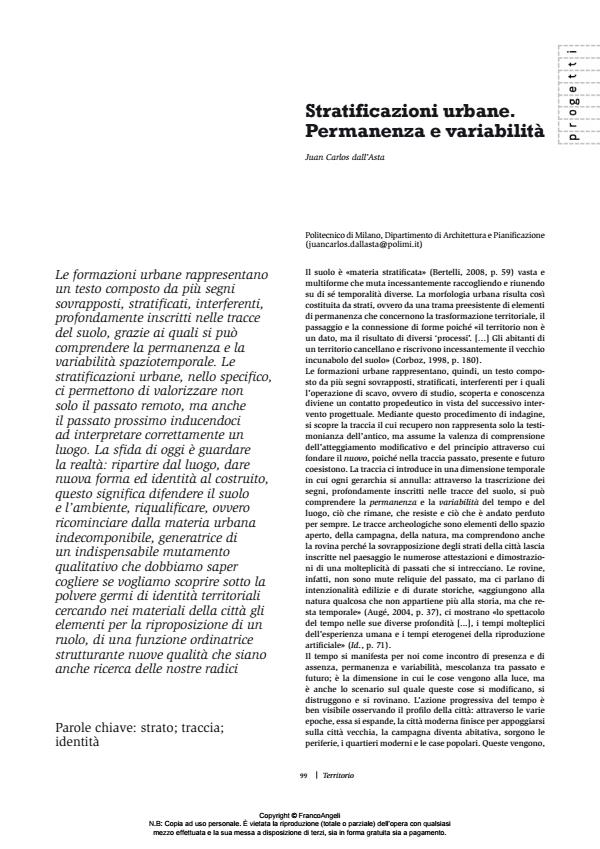Stratificazioni urbane. Permanenza e variabilità
Titolo Rivista TERRITORIO
Autori/Curatori Juan Carlos dall'Asta
Anno di pubblicazione 2012 Fascicolo 2012/63
Lingua Italiano Numero pagine 5 P. 99-103 Dimensione file 430 KB
DOI 10.3280/TR2012-063019
Il DOI è il codice a barre della proprietà intellettuale: per saperne di più
clicca qui
Qui sotto puoi vedere in anteprima la prima pagina di questo articolo.
Se questo articolo ti interessa, lo puoi acquistare (e scaricare in formato pdf) seguendo le facili indicazioni per acquistare il download credit. Acquista Download Credits per scaricare questo Articolo in formato PDF

FrancoAngeli è membro della Publishers International Linking Association, Inc (PILA)associazione indipendente e non profit per facilitare (attraverso i servizi tecnologici implementati da CrossRef.org) l’accesso degli studiosi ai contenuti digitali nelle pubblicazioni professionali e scientifiche
Urban formations are like a text composed of overlapping, stratified and interfering signs, deeply inscribed in the traces of the ground, thanks to which we are able to understand the permanence and variability of space and time. More specifically, urban stratifications allow us to enhance not just the remote past, but also the recent past, by inducing us to interpret a place correctly. The challenge of today is to look at the reality, to start again from the place and to give new shape and identity to the built. This means defending the land and the environment. It means redeveloping or starting again that is from urban material that cannot be broken up and which generates indispensable qualitative change that we must be capable of grasping if we are to discover the seed of community identity under the dust, seeking elements in the materials of towns and cities to propose a new role, a structuring function of new qualities which are also a search for our roots.
Parole chiave:Strata; trace; identity
Juan Carlos dall'Asta, Stratificazioni urbane. Permanenza e variabilità in "TERRITORIO" 63/2012, pp 99-103, DOI: 10.3280/TR2012-063019